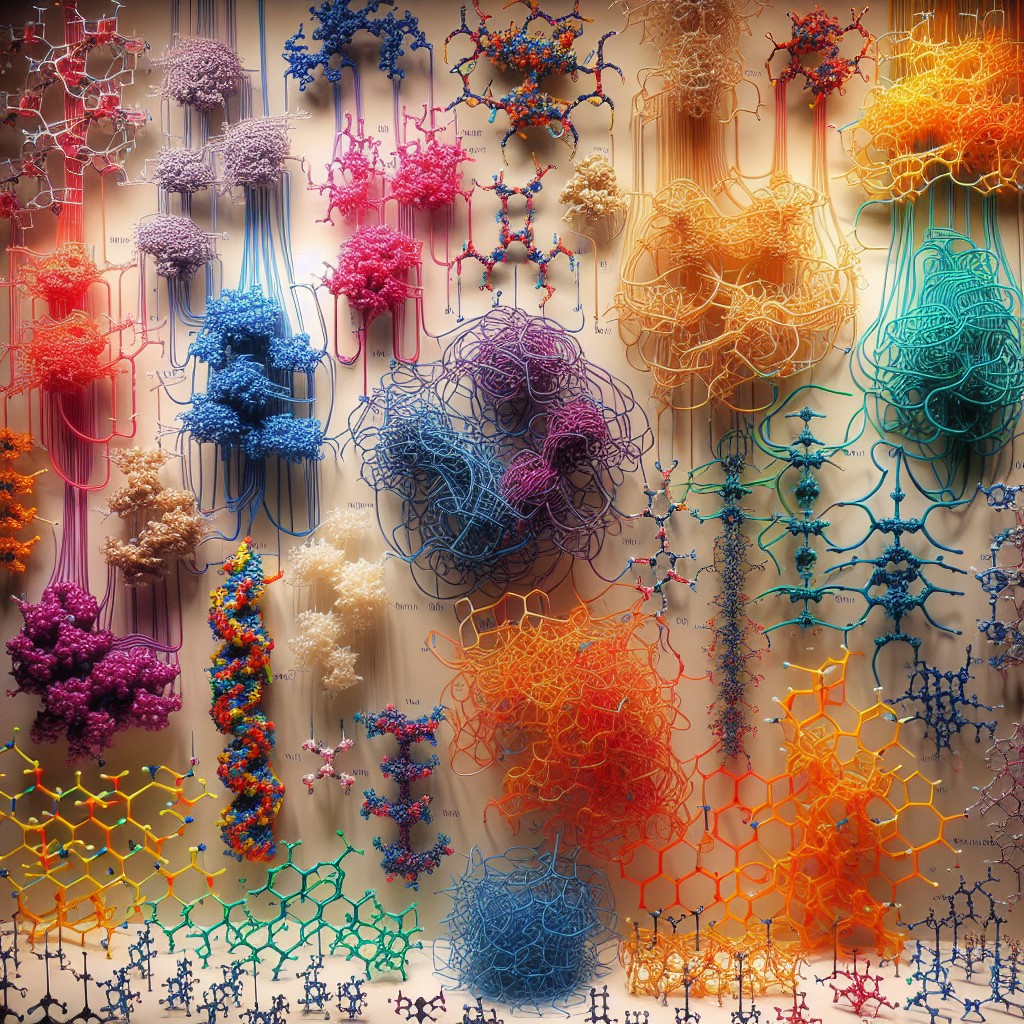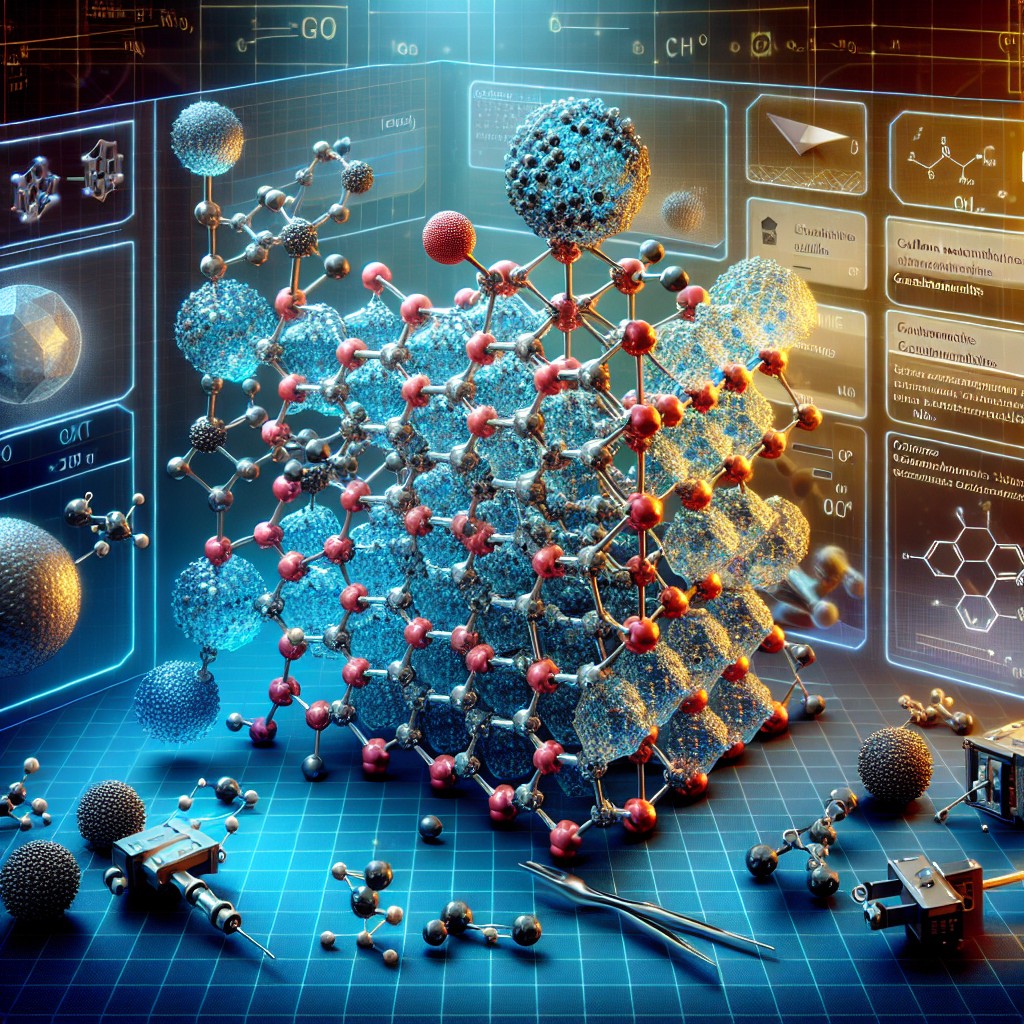Polymers are an essential part of our everyday lives, yet many people may not fully understand what they are or the impact they have on various industries. In simple terms, polymers are large molecules made up of repeating subunits called monomers. These molecules have unique properties that make them incredibly versatile and useful in a wide range of applications. In this article, we will explore the fascinating world of polymers, from their definition and properties to their applications in industries such as manufacturing, medicine, and even art. We will also discuss the future of polymer science and technology, as well as the environmental challenges associated with polymer waste.
Summary
- Polymers are fascinating because of their unique properties and versatility.
- Polymer materials have a wide range of applications, from plastics to rubber and beyond.
- Polymer chemistry involves understanding the process of polymerization.
- Polymers play a crucial role in modern manufacturing and industry, as well as in medicine and healthcare.
- The future of polymers is full of advancements and emerging technologies, but also poses environmental challenges that need to be addressed.
What are Polymers and Why are They So Fascinating?
Polymers can be defined as large molecules made up of repeating subunits called monomers. These monomers are chemically bonded together to form long chains or networks, resulting in the formation of a polymer. The unique properties of polymers arise from the arrangement and bonding of these monomers.
One of the most fascinating aspects of polymers is their versatility. They can be found in a wide range of materials, from plastics and rubber to fibers and films. Polymers can be rigid or flexible, transparent or opaque, and can have a wide range of mechanical properties. This versatility allows them to be used in countless applications across various industries.
Examples of polymers in everyday life include plastic bottles, rubber tires, nylon clothing, and even DNA. These materials have become so ingrained in our daily lives that we often take them for granted. However, without polymers, many of the products and technologies we rely on would not exist.
The Incredible Versatility of Polymer Materials
The applications of polymers are vast and diverse. They can be found in industries such as automotive, aerospace, electronics, packaging, construction, and healthcare, to name just a few. The versatility of polymer materials allows them to be tailored to specific requirements, making them ideal for a wide range of applications.
One of the advantages of using polymers over other materials is their lightweight nature. Polymers are typically much lighter than metals, making them ideal for applications where weight reduction is important, such as in the automotive and aerospace industries. Additionally, polymers can be easily molded into complex shapes, allowing for greater design flexibility and cost-effective manufacturing processes.
Industries that heavily rely on polymer materials include the automotive industry, where polymers are used in components such as bumpers, dashboards, and interior trims. The packaging industry also extensively uses polymers for bottles, containers, and films. In the construction industry, polymers are used in insulation materials, pipes, and roofing membranes. The healthcare industry relies on polymers for medical devices such as catheters, implants, and drug delivery systems.
From Plastics to Rubber: Exploring the Different Types of Polymers
| Types of Polymers | Properties | Uses |
|---|---|---|
| Polystyrene | Lightweight, rigid, brittle | Disposable cups, packaging, insulation |
| Polyethylene | Durable, flexible, resistant to chemicals | Bags, bottles, toys, pipes |
| Polypropylene | Tough, lightweight, heat-resistant | Car parts, packaging, textiles |
| Polyvinyl Chloride (PVC) | Flexible, durable, resistant to chemicals | Pipes, flooring, medical devices |
| Polyurethane | Elastic, durable, resistant to abrasion | Foam insulation, furniture, footwear |
| Natural Rubber | Elastic, waterproof, resistant to abrasion | Tires, gloves, footwear, adhesives |
There are several different types of polymers, each with its own unique characteristics and properties. Some of the most common types of polymers include plastics, elastomers, fibers, and composites.
Plastics are perhaps the most well-known type of polymer. They can be divided into two main categories: thermoplastics and thermosetting plastics. Thermoplastics can be melted and re-molded multiple times without undergoing any significant chemical change. Examples of thermoplastics include polyethylene (PE), polypropylene (PP), and polyvinyl chloride (PVC). Thermosetting plastics, on the other hand, undergo a chemical reaction during curing that irreversibly hardens the material. Examples of thermosetting plastics include epoxy resins and phenolic resins.
Elastomers are another type of polymer that exhibit elastic properties. They can be stretched or deformed under stress and return to their original shape when the stress is removed. Rubber is a common example of an elastomer, with natural rubber (polyisoprene) and synthetic rubber (such as styrene-butadiene rubber) being widely used in various applications.
Fibers are polymers that have been drawn into long, thin strands. They can be natural, such as cotton and silk, or synthetic, such as nylon and polyester. Fibers are used in textiles, ropes, and composites.
Composites are materials made up of two or more different types of polymers or a combination of polymers and other materials, such as fibers or fillers. Composites offer enhanced mechanical properties and can be found in applications such as aircraft components, sporting goods, and construction materials.
The Science Behind Polymer Chemistry: Understanding Polymerization
Polymerization is the process by which monomers are chemically bonded together to form a polymer. There are two main types of polymerization: addition polymerization and condensation polymerization.
Addition polymerization occurs when monomers with unsaturated bonds react with each other to form a polymer chain. This reaction is typically initiated by heat, light, or a catalyst. Addition polymerization is commonly used to produce thermoplastics such as polyethylene and polypropylene.
Condensation polymerization, on the other hand, occurs when monomers react with each other to form a polymer chain while also releasing a small molecule as a byproduct, such as water or alcohol. This type of polymerization is used to produce thermosetting plastics and elastomers.
The process of polymerization is crucial in the creation of polymers. It allows for the controlled synthesis of polymers with specific properties and characteristics. By adjusting the monomer composition, reaction conditions, and polymerization techniques, scientists can tailor the properties of polymers to meet specific requirements for different applications.
The Role of Polymers in Modern Manufacturing and Industry

Polymers play a vital role in modern manufacturing and industry. Their unique properties and versatility make them ideal for a wide range of applications, from consumer goods to high-tech industries.
One of the key advantages of using polymers in manufacturing is their ease of processing. Polymers can be molded into complex shapes using various techniques such as injection molding, blow molding, and extrusion. This allows for cost-effective mass production of components with consistent quality.
Polymers also offer excellent chemical resistance, making them suitable for applications where exposure to harsh chemicals is a concern. They are also electrically insulating, making them ideal for electrical and electronic applications.
Industries that heavily rely on polymers include the automotive industry, where polymers are used in components such as bumpers, dashboards, and interior trims. The aerospace industry also utilizes polymers in aircraft components such as panels, insulation materials, and composites. The electronics industry relies on polymers for circuit boards, connectors, and insulating materials. The packaging industry extensively uses polymers for bottles, containers, films, and wraps.
Polymers in Medicine and Healthcare: Innovations and Applications
Polymers have revolutionized the field of medicine and healthcare. They have enabled the development of innovative medical devices, drug delivery systems, and tissue engineering scaffolds.
One of the key advantages of using polymers in medicine is their biocompatibility. Many polymers are non-toxic and do not elicit an immune response when implanted in the body. This makes them suitable for use in medical devices such as catheters, implants, and prosthetics.
Polymers are also used in drug delivery systems to control the release of drugs over time. By encapsulating drugs within polymer matrices or coatings, the release rate can be tailored to achieve optimal therapeutic effects. This allows for targeted drug delivery and reduces the need for frequent dosing.
In tissue engineering, polymers are used as scaffolds to support the growth and regeneration of tissues and organs. These scaffolds provide a framework for cells to attach, proliferate, and differentiate, ultimately leading to the formation of functional tissues. Polymers used in tissue engineering must be biocompatible, biodegradable, and possess mechanical properties similar to the target tissue.
Advancements in polymer technology have also led to the development of bioresorbable polymers, which can be broken down and absorbed by the body over time. These polymers are used in applications such as sutures, bone fixation devices, and drug-eluting stents. Bioresorbable polymers eliminate the need for surgical removal of implants and reduce the risk of long-term complications.
The Future of Polymers: Advancements and Emerging Technologies
The field of polymer science is constantly evolving, with new advancements and emerging technologies pushing the boundaries of what is possible. Researchers are continuously exploring new materials, synthesis methods, and applications for polymers.
One area of focus is the development of smart polymers, also known as stimuli-responsive or intelligent polymers. These materials can change their properties in response to external stimuli such as temperature, pH, light, or electric fields. Smart polymers have the potential to revolutionize drug delivery systems, sensors, actuators, and other applications where controlled release or responsiveness is desired.
Another emerging technology in polymer science is additive manufacturing, also known as 3D printing. This technology allows for the direct fabrication of complex 3D objects layer by layer using computer-aided design (CAD) models. 3D printing has the potential to revolutionize manufacturing processes by enabling rapid prototyping, customization, and on-demand production.
Researchers are also exploring the use of nanotechnology in polymer science. Nanocomposites, which are materials composed of a polymer matrix reinforced with nanoparticles, offer enhanced mechanical, thermal, and electrical properties. Nanoparticles can also be used to modify the surface properties of polymers, making them more hydrophobic, antimicrobial, or conductive.
Environmental Impacts of Polymer Materials: Challenges and Solutions
While polymers have revolutionized various industries, they also pose significant environmental challenges. The production, use, and disposal of polymers contribute to pollution, resource depletion, and waste management issues.
One of the main challenges associated with polymer waste is its persistence in the environment. Many polymers are non-biodegradable and can take hundreds of years to decompose. This leads to the accumulation of plastic waste in landfills, oceans, and other natural habitats.
Plastic pollution has become a global issue, with devastating impacts on marine life and ecosystems. Animals can become entangled in plastic debris or mistake it for food, leading to injury or death. Microplastics, which are tiny particles of plastic less than 5mm in size, have also been found in the air, water, and even in our food chain.
To address these environmental challenges, various solutions are being explored. One approach is the development of biodegradable polymers that can break down into harmless byproducts under specific conditions. Biodegradable polymers can help reduce the accumulation of plastic waste and minimize the environmental impact.
Another solution is the promotion of recycling and circular economy principles. By implementing effective recycling systems and encouraging the use of recycled polymers, we can reduce the demand for virgin materials and conserve resources. Additionally, innovative technologies such as chemical recycling and biorefineries are being developed to convert polymer waste into valuable products or feedstocks for other industries.
Polymers in Everyday Life: Products and Applications You Never Knew
Polymers are present in countless products that we use every day, often without even realizing it. From household items to personal care products, polymers have become an integral part of our daily lives.
One example is plastic bottles, which are made from polyethylene terephthalate (PET). PET is a lightweight, transparent, and durable polymer that is ideal for packaging beverages and other liquids. Plastic bottles are widely used for water, soft drinks, juices, and even cleaning products.
Another example is nylon clothing, which is made from a synthetic polymer called polyamide. Nylon is known for its strength, durability, and resistance to abrasion. It is commonly used in the production of clothing, hosiery, and sportswear.
Polymers are also used in personal care products such as cosmetics and toiletries. For example, polyethylene glycol (PEG) is a common ingredient in lotions, creams, and ointments due to its moisturizing properties. Polymers are also used in hair care products such as shampoos and conditioners to improve texture, manageability, and hold.
The Art of Polymer Design: Creativity and Innovation in Polymer Science
Polymer design goes beyond functionality and extends into the realm of creativity and innovation. Artists and designers have embraced polymers as a medium for their creations, pushing the boundaries of what is possible.
One example of innovative polymer design is the use of shape memory polymers (SMPs). SMPs have the ability to change shape when exposed to a specific stimulus such as heat or light. This property allows for the creation of dynamic sculptures and interactive installations that respond to the environment or user interaction.
Polymer clay is another popular material among artists and hobbyists. Polymer clay is a type of modeling clay that hardens when baked at low temperatures. It can be molded into various shapes, textures, and colors, making it ideal for creating jewelry, figurines, and decorative objects.
In the field of architecture and design, polymers are used to create lightweight structures with unique shapes and forms. Tensile structures, for example, use polymer membranes to create large-span roofs and canopies that are both functional and visually striking.
Polymers are truly fascinating materials that have revolutionized various industries and become an integral part of our everyday lives. Their unique properties, versatility, and ease of processing make them ideal for a wide range of applications, from consumer goods to high-tech industries.
The future of polymer science and technology holds great promise, with advancements in areas such as smart polymers, additive manufacturing, and nanotechnology pushing the boundaries of what is possible. However, it is important to address the environmental challenges associated with polymer waste and promote sustainable practices in the production, use, and disposal of polymers.
As we continue to explore the creative and innovative side of polymer design, we can expect to see even more exciting applications and advancements in the field. Polymers will continue to shape our world and play a crucial role in solving some of the greatest challenges we face as a society.
FAQs
What are polymers?
Polymers are large molecules made up of repeating units called monomers. They can be natural or synthetic and have a wide range of properties and uses.
What are some examples of natural polymers?
Examples of natural polymers include proteins, DNA, cellulose, and rubber.
What are some examples of synthetic polymers?
Examples of synthetic polymers include polyethylene, polystyrene, PVC, and nylon.
What are the properties of polymers?
Polymers can have a wide range of properties, including flexibility, strength, durability, and resistance to heat, chemicals, and electricity.
What are some common uses of polymers?
Polymers are used in a wide range of applications, including packaging, textiles, electronics, construction, and medicine.
How are polymers made?
Polymers can be made through a variety of processes, including polymerization, condensation, and addition reactions.
What are the environmental impacts of polymers?
Polymers can have negative environmental impacts, including pollution and waste. However, efforts are being made to develop more sustainable and eco-friendly polymers.



